Intel Launches 8th Generation Core CPUs, Starting with Kaby Lake Refresh for 15W Mobile
by Ian Cutress on August 21, 2017 3:01 AM EST- Posted in
- CPUs
- Intel
- Core
- Core 8th Gen
- U-Series
- Kaby Lake Refresh
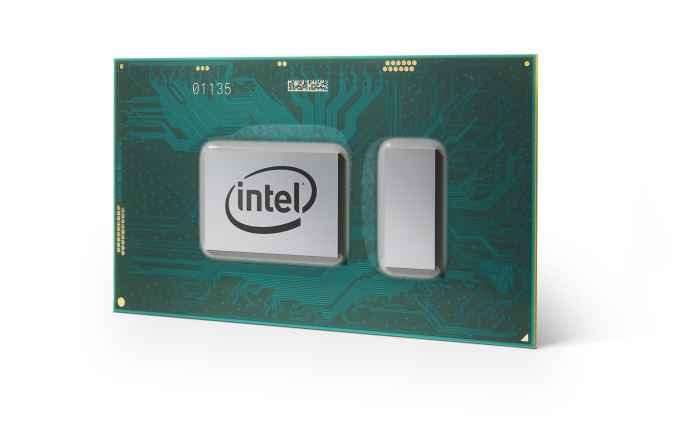
This year has been enjoyably eventful for processor releases. Intel launched their 7th Generation processors, Kaby Lake, in January. Then we had AMD release their new high-performance microarchitecture in Ryzen, EPYC and Threadripper. Intel then launched their Skylake-SP Xeon Scalable Platform, based on an upgraded 6th Generation core design, and we’re expecting new AMD APUs for mobile later this year.
And adding to that list this morning is once again is Intel. Today the company is launching its new 8th Generation family of processors, starting with four CPUs for the 15W mobile family. The launch of these processors was perhaps spoiled by Intel jumping the gun a few days ago and listing the processors on its own public price list, but also we have started to see laptop and mobile designs being listed at various retailers before the official announcement.
There are two elements that make the launch of these 8th Gen processors different. First is that the 8th Gen is at a high enough level, running basically the same microarchitecture as the 7th Gen – more on this below. But the key element is that, at the same price and power where a user would get a dual core i5-U or i7-U in their laptop, Intel will now be bumping those product lines up to quad-cores with hyperthreading. This gives a 100% gain in cores and 100% gain in threads.
Obviously nothing is for free, so despite Intel stating that they’ve made minor tweaks to the microarchitecture and manufacturing to get better performing silicon, the base frequencies are down slightly. Turbo modes are still high, ensuring a similar user experience in most computing tasks. Memory support is similar – DDR4 and LPDDR3 are supported, but not LPDDR4 – although DDR4 moves up to DDR4-2400 from DDR4-2133.
| Specifications of Intel Core i5/i7 U-series CPUs | |||||||||||
| 7th Generation | 8th Generation | ||||||||||
| Cores | Freq + Turbo |
L3 | Price | Cores | Freq + Turbo |
L3 | Price | ||||
| i7-7660U | 2/4 | 2.5/4.0 GHz | 4 MB | $415 | i7-8650U | 4/8 | 1.9/4.2 GHz | 8 MB | $409 | ||
| i7-7560U | 2.4/3.8 GHz | $415 | i7-8550U | 1.8/4.0 GHz | $409 | ||||||
| i5-7360U | 2/4 | 2.3/3.6 GHz | 3 MB | $304 | i5-8350U | 4/8 | 1.7/3.6 GHz | 6 MB | $297 | ||
| i5-7260U | 2.2/3.4 GHz | $304 | i5-8250U | 1.6/3.4 GHz | $297 | ||||||
Another change from 7th Gen to 8th Gen will be in the graphics. Intel is upgrading the nomenclature of the integrated graphics from HD 620 to UHD 620, indicating that the silicon is suited for 4K playback and processing. During our pre-briefing it was categorically stated several times that there was no change between the two, however we have since confirmed that the new chips will come with HDCP 2.2 support as standard for DP1.2a, removing the need for an external LSPCON for this feature. Other than this display controller change however, it appears that these new UHD iGPUs are architecturally the same as their HD predecessors.
Fundamentally these are what Intel calls a ‘4+2’ silicon design, featuring four cores and GT2 integrated graphics, whereas the last generation used 2+2 designs. The 4+2 design was also used in the mainstream desktop processors, suggesting that Intel is using those dies now for their 15W products rather than their 45W+ products. That being said, Intel is likely to have created new masks and revisions for this silicon to account for the lower power window as well as implementing HDCP 2.2 support and other minor fixes.
Now by having quad-core parts in the 15W form factor, performance on the new chips is expected to excel beyond what has been available from the previous generation of Core i5-U and Core i7-U processors. However Intel and its OEMs have a tight balancing act to walk here, as 15W is not a lot of thermal headroom for a two core CPU, let alone a four core one. At the same time we have started to see the 15W U-series parts find their way into smaller and even fanless notebook designs, which are more prone to throttling under sustained workloads, and quad core CPUs in this segment could exacerbate the issue. However, for the larger 13-15-inch designs with active cooling, moving down from a 35W-45W quad core processor down to 15W will likely offer substantially better battery life during intense loading, should OEMs swap out H-series chips for the new U-series chips in their designs.
Intel’s big aim with the new processors is, as always, to tackle the growing market of 3-5+ year old devices still being used today, quoting better performance, a better user experience, longer battery life, and fundamentally new experiences when using newer hardware. Two years ago Intel quoted 300 million units fit into this 3-5+ year window; now that number is 450 million.
Intel provided this shot of a wafer containing these new refresh dies, which by my math gives 22 x 32.7 dies per wafer. Giving some margin for die spacing, this correlates to a 13.6 x 9.1 mm die, at 124 mm2 and 478 full dies per wafer. At a tray cost of $409 per Core i7, and running at ~124mm2 per die, that makes an interesting metric of $3.30 per square millimeter. Intel no longer officially provides die sizes or transistor counts, though a list of $/mm2 would be interesting to compile - for reference some of the high-end Xeons push north of $19/mm2.
Kaby Lake Refresh? 14+? Where’s my Coffee (Lake)?
So despite Intel launching its 7th Generation family in January, today Intel is formally launching the 8th Generation only eight months later. To explain why Intel is breaking the usual 12-18 month cadence for the generation product, it comes down to product positioning.
In the past we are used to a new numbered generation to come with a new core microarchitecture design. But this time Intel is improving a core design, calling it a refresh, and only releasing a few processors for the mobile family. We expect that Intel’s 8th Generation will eventually contain three core designs of product on three different process design nodes: the launch today is Kaby Lake Refresh on 14+, and in the future we will see Coffee Lake on 14++ become part of the 8th Gen, as well as Cannon Lake on 10nm.
| Intel's Core Architecture Cadence (8/20) | |||||
| Core Generation | Microarchitecture | Process Node | Release Year | ||
| 2nd | Sandy Bridge | 32nm | 2011 | ||
| 3rd | Ivy Bridge | 22nm | 2012 | ||
| 4th | Haswell | 22nm | 2013 | ||
| 5th | Broadwell | 14nm | 2014 | ||
| 6th | Skylake | 14nm | 2015 | ||
| 7th | Kaby Lake | 14nm+ | 2016 | ||
| 8th | Kaby Lake Refresh Coffee Lake Cannon Lake |
14nm+ 14nm++ 10nm |
2017 2017? 2018? |
||
| 9th | Ice Lake? ... |
10nm+ | 2018? | ||
| Unknown | Cascade Lake (Server) | ? | ? | ||
Now the Generation name is no longer in direct correlation with underlying core microarchitecture or lithography process. This is going to confuse some users and anger others, although Intel’s official line is along the lines of the fact that lithography process nodes are harder to optimize, smaller nodes benefit in yield from smaller cores and as such their product portfolio has to expand beyond traditional naming in order to provide the appropriate product and the appropriate price point.
In our pre-briefings, Intel only mentioned Coffee Lake in the context of the fact that today’s launch is not Coffee Lake. Because media were expecting this to be Coffee Lake (and expecting it to be a desktop processor launch), the question ‘is this Coffee Lake’ was actually asked several times, and the answer had to be repeated. These four new CPUs are still Kaby Lake CPUs built on the same 14+ technology, with minor updates, and bringing quad cores to 15W.
So when is Coffee Lake on 14++ (or Cannon Lake) coming? Intel only stated that other members of the 8th Generation family (which contains Kaby Lake Refresh, Coffee Lake and Cannon Lake) are coming later this year. Desktop will come in the autumn, and additional products for enterprise, workstation and enthusiast notebooks will also happen. As for today's 8th Generation U-series announcement, Intel tells us that we should start seeing laptops using the new CPUs hit the market in September.
Update: Along with the product specs for the new mobile SKUs, Intel has also uploaded the new box art for the desktop 8th Gen Core parts to their website. The boxes confirm, among other things, that once these desktop parts will launch they'll have 6 cores (with HT for the i7) and require 300 series motherboards.
Related Reading
- Unannounced 8th Generation Core 15W U-Series CPUs Appear on Intel’s Public Price List
- Intel to Announce 8th Generation Core Processors on August 21st
- Coffee Lake Not Supported by Intel’s 200-Series Motherboards
- Intel Officially Reveals Post-8th Generation Core Architecture Code Name: Ice Lake, Built on 10nm+


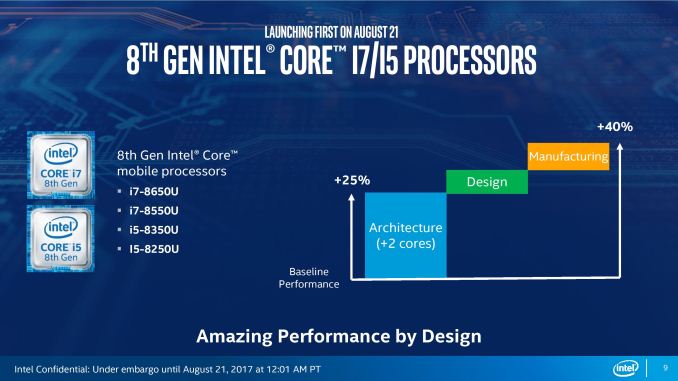
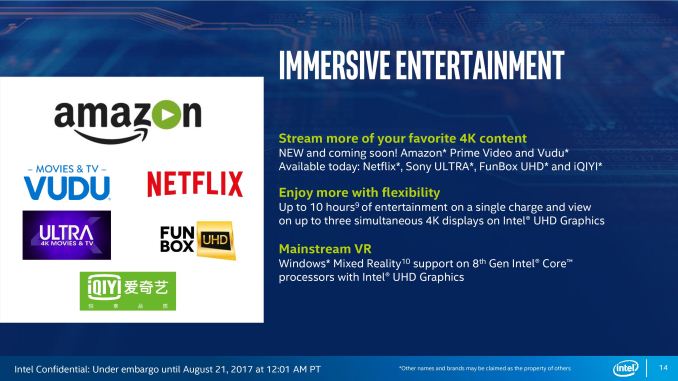
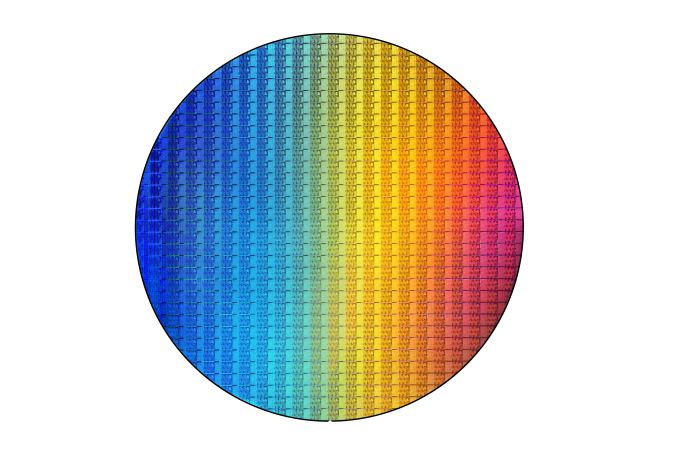
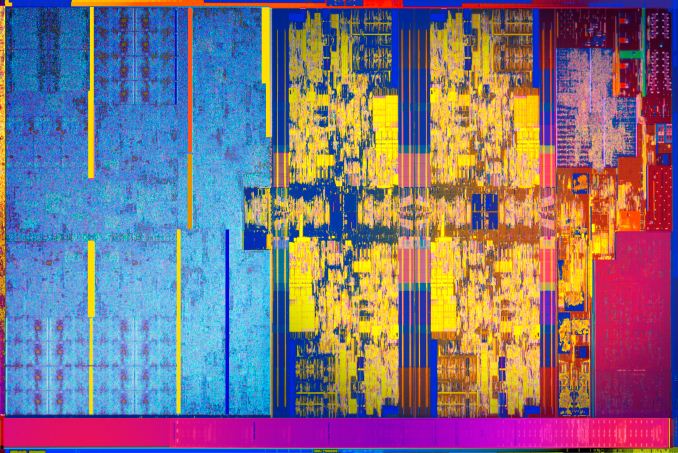
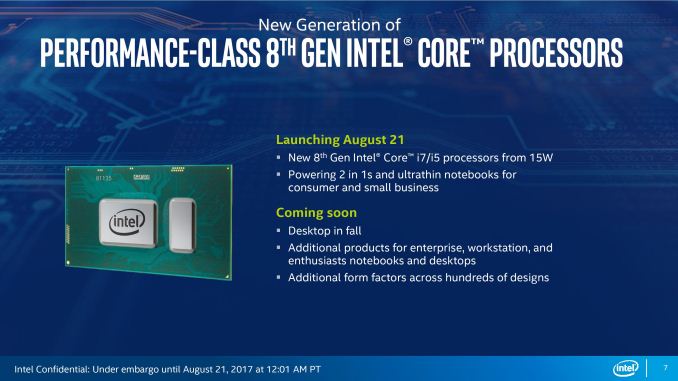
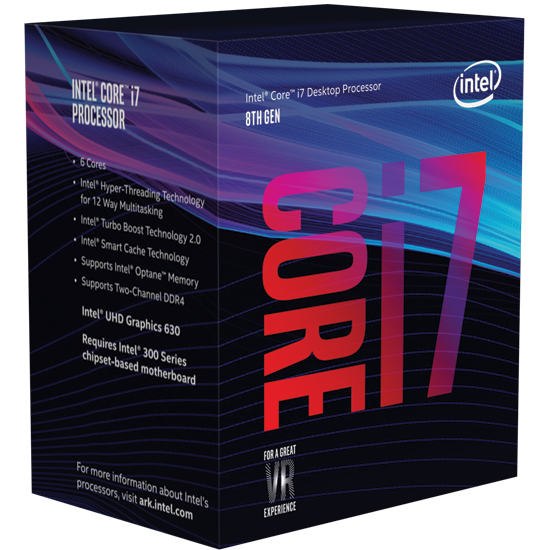
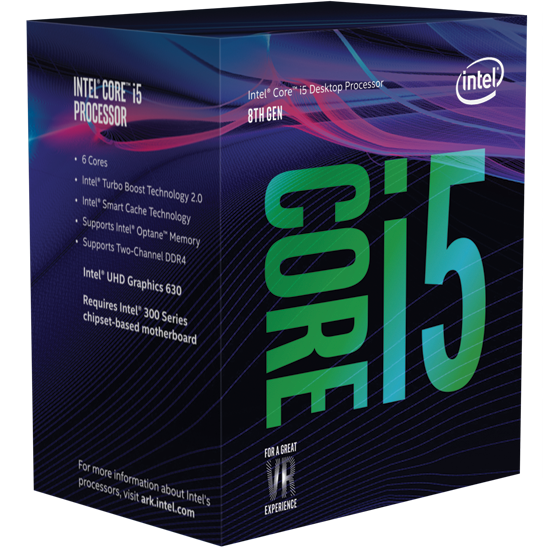














145 Comments
View All Comments
Kakti - Thursday, August 31, 2017 - link
That just tells us that Intel's processors are still stable when running at an even lower speed/power use. It's more efficient to have the CPU slow down when not in use, and then turbo back up once it needs to. No sense in having your CPU running at 4.5ghz all day, especially on mobile parts.Da W - Monday, August 21, 2017 - link
Shows Intel *COULD* sell us quad core before, they just didn't want to. Don't give a fuck about +3% framerate on games, gonna buy from AMD as long as they make something good enough.YoloPascual - Monday, August 21, 2017 - link
Lucky intel nvidia made MX150. They were about to lose it all with the upcoming iGPU of raven ridge. 500-800$ laptops will still be intel+nvidia combo.Lolimaster - Monday, August 21, 2017 - link
Raven Ridge should destroy the GT1030 for mobile considering their GPU sits in between RX550-RX460 with dual channel DDR4 GT1030 has zero chance vs the RX550.RX550 512SP Polaris
Raven Ridge APU 704SP Vega
RX460 896SP Polaris.
BrokenCrayons - Monday, August 21, 2017 - link
I'm not sure about Raven Ridge's GPU performance yet. The GT 1030/MX150 has dedicated VRAM and dedicated VRAM bandwidth. It presumably still uses some form of what was once called TurboCache back when Nvidia released the 6200 back in 2004 or 2005 so it'll also have access to system memory's dual DDR4 channels. So there's about 40-50GB/s for the GT 1030's 64-bit GDDR5 and then there's whatever else can be nabbed from the RAM if the CPU or other system devices aren't using it.I don't think the same can be achieved easily if Raven Ridge's iGPU has to fight with the CPU cores for system memory bandwidth which is going to be higher latency than the GT 1030's GDDR5 and there's still the problem with concentrating all that heat into the CPU package. Additionally, Vega isn't much of an improvement over GCN so the 512SP count in prior generation APUs was already only barely competitive with the GT 730 (in a lot of cases, it fell behind in benchmarks due to bandwidth limitations) so the additional SPs won't be that much faster compared to prior generation SPs and they'll likely clocked lower than a dedicated RX GPU because of thermal limits so they may not offer a substantial increase over prior gen APUs or against the GT 1030/MX150.
Don't get me wrong, the A-series iGPU was a competitive product against Intel's non-Iris graphics and replacing those older/weaker CPU cores with Zen is a good thing, but I don't think you're going to see Raven Ridge end up in a position of dominance over the GT 1030. We really should take a wait-and-see approach and then look at benchmarks as they become available before predicting the demise of the 1030 and its mobile variant.
Anonymous Blowhard - Monday, August 21, 2017 - link
NVIDIA hasn't used "TurboCache" on their dGPUs since the 6000 series - it's long dead. I'd be very surprised to see it reintroduced for the sake of expanding a 2GB VRAM pool on a 384-core chip.For Raven Ridge, dual-channel DDR4-2400 can do a theoretical 38.4GB/s of memory bandwidth - if you account for controller overhead, that's probably more like 32GB/s. Not that far behind the MX150, but as you mentioned it's got to share that with the CPU. Newer game engines that can take advantage of shared memory addressing on the APU might be able to offset some of the performance lost there.
For clock speeds, leaked benchmarks had the GPU clocks at 800MHz, but I don't know what the TDP was. I'm imagining the 35-45W range for the higher end ones.
tl;dr - Release something already AMD, so we can see what you've got.
AleXopf - Tuesday, August 22, 2017 - link
I expect the top of the line apu to be:One ccx 4c/8t
Interconect to the iGPU instead to another ccx
RX550 performance because of downlocking for power budget and efficiency
2gb of hbm2 @ 1ghz as l4 cache/graphics memory
JoeyJoJo123 - Monday, August 21, 2017 - link
>that once these desktop parts will launch they'll have 6 cores (with HT for the i7) and require 300 series motherboardsGetting pretty tired of this socket/chipset change a year keeps the goyim in fear meme from Intel. Can we not just get some backwards compatibility with older motherboards for once?
Lolimaster - Monday, August 21, 2017 - link
Buy AMD and be happy?Why support the one who spits in your face?
AM4 support
Ryzen 14nm
Ryzen Optimized 14nm
Ryzen II 7nm
Ryzen III 7nm+ (probably with some AM5 and Ryzen III with dual DDR4/DDR5 memory controller like Phenom II)
Hurr Durr - Monday, August 21, 2017 - link
Ten years of nonperformance is the real spit in the face here.